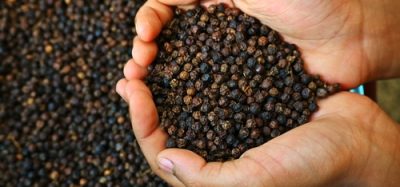California’s air pollution regulations help farmers prosper, study finds
- Like
- Digg
- Del
- Tumblr
- VKontakte
- Buffer
- Love This
- Odnoklassniki
- Meneame
- Blogger
- Amazon
- Yahoo Mail
- Gmail
- AOL
- Newsvine
- HackerNews
- Evernote
- MySpace
- Mail.ru
- Viadeo
- Line
- Comments
- Yummly
- SMS
- Viber
- Telegram
- Subscribe
- Skype
- Facebook Messenger
- Kakao
- LiveJournal
- Yammer
- Edgar
- Fintel
- Mix
- Instapaper
- Copy Link
Posted: 17 March 2020 | Sam Mehmet (New Food) | No comments yet
Researchers have found that reductions in ground ozone during a 35-year period in California, due to air pollution regulations, resulted in $600 million in increased agricultural production annually.


Researchers at the University of California, Irvine and other institutions have conducted a statistical analysis of pollution exposure and yields from 1980 to 2015 on a key sector making up 38 percent of the California’s total agricultural output: perennial crops such as almonds, grapes, nectarines, peaches, strawberries and walnuts. They found that reductions in air pollution has increased agricultural productivity by $600 million annually.
“A lot of California farmers may not appreciate that air quality standards have had such a benefit on their ability to grow crops,” said co-author Steven Davis, UCI associate Professor of Earth system science. “The irony is that by fighting against certain environmental regulations, these folks may be damaging their own earning capacity.”
The researchers also projected yield changes up to 2050 under various scenarios, determining that expected declines in ambient ozone will result in a five percent boost in wine grapes, an eight percent climb in nectarines and a 20 percent jump in table grapes. They discovered, however, that yields of other crops, such as almonds, may suffer comparable decreases due to higher temperatures.
Davis noted that earlier studies on the impact of climate warming and ambient ozone on our ability to grow food have focused on high-volume staple crops such as wheat, soy and rice. But he and his colleagues chose to concentrate on perennials because of the long-term investment they represent and the fact that California is a major supplier of this type of produce.
“These aren’t the things that are providing the global population with its main source of calories. These are the sweet things in life – fruits, nuts and grapes for wine,” Davis said. “Also, monetarily, some of these crops are a lot more valuable than wheat or corn.”
The study is said to have demonstrated that the effects of warming have not been statistically significant for many perennial crops to date, but ambient ozone – much of which results from emissions from California’s energy production and transportation sectors – substantially reduces harvests of strawberries, grapes, peaches and nectarines – by as much as 22 percent in the case of table grapes.
“If you look at a map of the state, you’ll see an overlap in areas such as the San Joaquin Valley where many perennial crops are grown and which have high levels of ozone pollution,” said lead author Chaopeng Hong, a UCI postdoctoral scholar in Earth system science. “This co-location indicates that there are opportunities to increase the state’s crop production with even a localised reduction in the amount of ambient ozone pollution.”
Davis said that now that he and his fellow climate scientists know more about the relationship between air pollution and agricultural output, California is in a position to serve as a test bed for different climate change mitigation scenarios.
Related topics
Environment, Regulation & Legislation, Research & development, Sustainability









